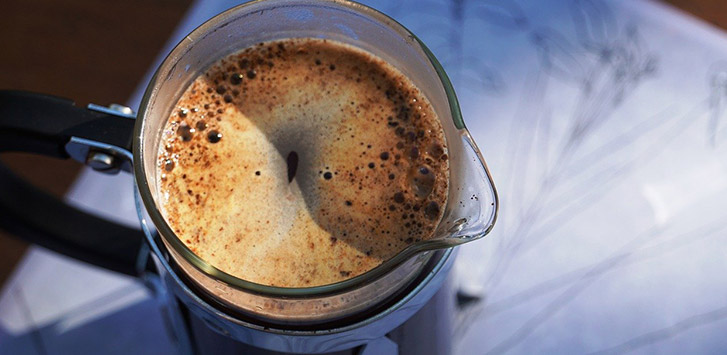
When you ask someone “how strong is this coffee?”, what exactly do you mean? Do you mean to ask how much caffeine is in the drink or do you mean to ask how strong (or flavorful) the coffee is? In some sense, it depends on whom you ask. The coffee connoisseur will respond one way, while the coffee newbie will respond another. While neither response is technically incorrect, it could very well be the wrong answer too.
Confused yet? So are we. This confusion is at the heart of the issue; the exact meaning of what is “strong coffee”. We hope to unpack this confusion as we delve into how to make “strong coffee”.
So, What Do We Mean When We Say “Strong Coffee”?
The looming dichotomy that lies at the heart of how to make strong coffee is what do you mean when we say, “strong coffee”. Do we mean coffee that has high amounts of caffeine or is strong coffee strong in the sense that it has a certain strength of flavor?
While both can be true in some sense, usually when one asks such a question one means either the coffee’s flavor or high caffeine content. This line of thinking illustrates the divide between coffee enthusiasts and those who simply just drink coffee for its benefits. However, because both meanings are true, it's best to answer both questions as best as we can.
Bean Variety
The type of coffee bean plays an important part in its caffeine content, while the country of origin also plays an important on its strength of flavor. Robusta beans typically have more caffeine within in them compared to Arabica or even the more esoteric Liberica or Excelsa coffee beans. In contrast, Arabica beans will have a stronger flavor than Robusta beans; which are used for espresso blends or fillers in more commercial coffees.
Notable Arabica beans that have developed renown across the world for their flavor profile and strength of flavor are many, but the most notable that are typically mentioned are Columbian beans, Kona coffee, Jamaican Blue Mountain beans, nearly all of the coffee beans coming from Ethiopia, and Sumatrans.
Roast Type
In addition to the type and origin of the coffee bean’s impact on caffeine content and flavor, another factor that contributes to making strong coffee is the roast type or roast level. This aspect is of important note for determining the strength of flavor as coffee roasting at different levels for the same bean can have varied and even dramatic effects.
Generally, the mainstream thinking is the dark roast coffees are more “caffeinated”, however, the truth is quite the opposite. Light roasts (and the even rarer white coffee roast) tend to have more caffeine present as the roasting process tends to chemically eliminate caffeine the longer the roasting process occurs.
However, at darker roast levels, the heat from the roaster will caramelize the sugars present within the bean which in turn brings forth the richer overall flavor present within the bean itself. The natural caramelization of the sugars also imparts a certain sweetness to darker roasts, thus creating a deeper, stronger, and more nuanced cup of coffee compared to the acidity of lighter roasts.
Brew Method
In addition to the effects that roasting has on our two-fold definition, the varying aspects of coffee brewing also impart their signatures on the relative strength of flavor and caffeine level of strong coffee. From a coffee bean’s grind size, the ratios of coffee to ounces of water, and the actual brewing method itself all have a part to play in making a strong cup of coffee. Let us break down each a bit further to learn just how this is possible.
Grind Size
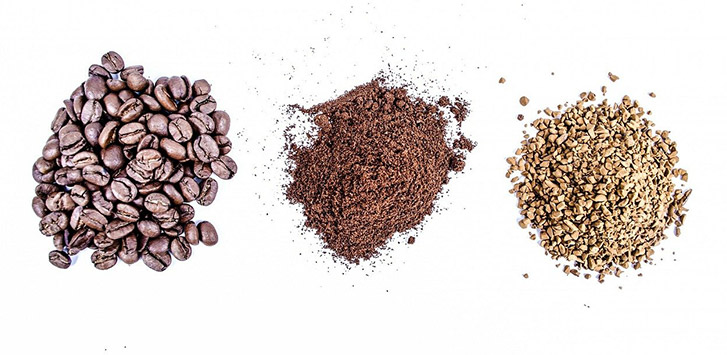
Even before the coffee begins to be brewed, the beans must be ground. It’s here where subtle variations can play a huge impact on just how strong your morning cup will turn out. Accurately matching a specific grind size to a preferred brewing method can help go a long way in making strong coffee, while not becoming over or under-extracted during the brewing process.
Without getting into the nitty-gritty, there are broad categories of grind size; coarse and fine. Finer grinds tend to brew faster as they have more surface area to extract flavor from, while coarse grinds need a longer brewing time to properly extract their inherent flavor.
Now obviously there are subtle gradations between these two overarching categories, but the general point is still applicable. We will touch upon how this principle is applied to specific brewing methods a bit later in this post.
Coffee to Water Ratio
Most, if not almost every, brewing method includes water as part of the process. So it's obvious the quantity of water when compared to coffee can also play a big part in just how strong the cup of coffee turns out to be.
Like any recipe, using the right amount of each ingredient is key in creating a delicious dish (or in our case, coffee!) But like grind size and bean type, the correct ratio of coffee to water impacts not only the caffeine content and depth of flavor but also imparts a better overall mouthfeel.
Using too much or too little can lead to an under or over-extracted cup. If you’d like to learn more on how to get the right coffee to water ratio, read through our guide that details how to properly dial in the right amount of each.
Brewing Methods
Now that we have discussed the importance of both grind size and coffee to water ratios, we can properly decide just what kind of brewing method aligns with the outcome we would like to achieve; a highly caffeinated cup of coffee or a coffee that has unrivaled strength of flavor.
Automatic Drip Brew
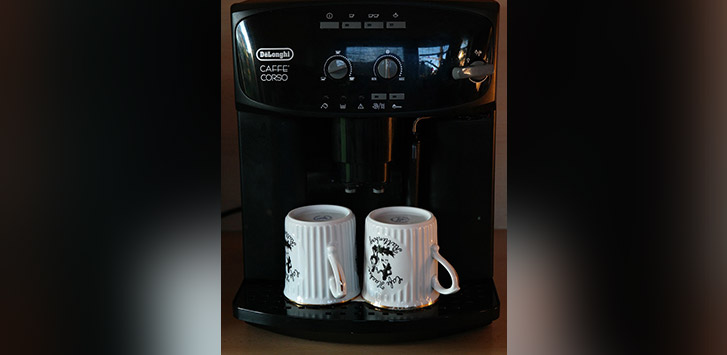
The most common way for most coffee drinkers to get the morning pick up is the tried-and-true automatic drip-brew. This brewing method is relatively safe from messing up and is almost a “set it and forget” type of brewing method that does not need a lot of fussing to create a nice cup of coffee.
The only two points of advice that we give you are to keep your coffee grounds to a medium or medium-fine grind and to be mindful of the type of coffee filter you use. So really the strength of your cup of coffee depends on your personal preference for drip coffee.
French Press
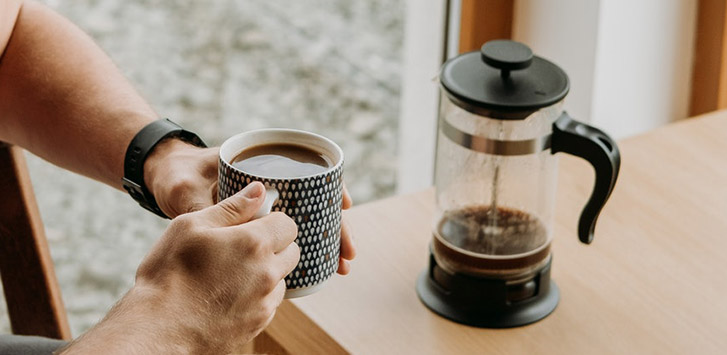
French Press is noted for its depth of flavor as well as its jitter-inducing caffeine content. Medium coarse grinds tend to take to French press well. However, the secret to the French Press is the longer steep time that French press compared to automatic drip brewers or espressos. If you ask us, the french press seems to combine the best of both worlds of what makes a strong cup of coffee, the depth of flavor as well as caffeine content.
Espresso

Espressos are noted for creating a strong cup of coffee, in sense of it being highly caffeinated. While not as flavorful (due to its quicker brewing time) compared to a French press, espresso’s relative difficulty to homebrew correctly and accurately without the requisite (and expensive) equipment means that it's often out of reach from most home roasters and coffee enthusiasts. Apparently, there is an espresso type that uses less water and is even more caffeinated called a "ristretto".
Cold Brew
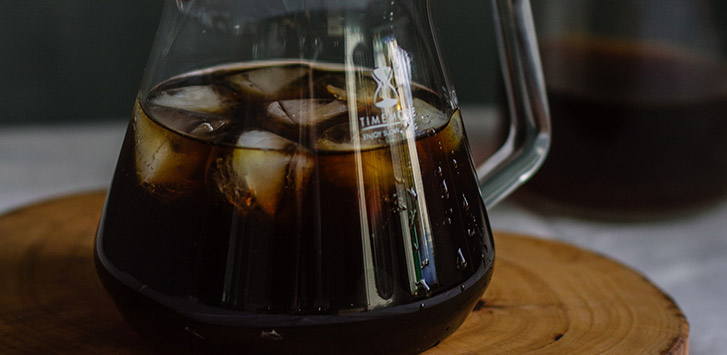
Finally, cold brew is another coffee that is known for its strength, but unlike the French press or espresso, cold brew intentionally subdues the flavor of the coffee to create a smooth, but highly caffeinated coffee drink that all but stamps out any inherent “coffee” flavor of the beans. This method uses extra coarse grinds alongside a very long steep time. Unsurprisingly, given that this brewing method extracts most of the flavors that coffee drinkers enjoy, many people add other ingredients to the drink to give it more flavor.
How to Brew Strong Coffee
Now that we have not only clarified the two implicit definitions of strong coffee but also elaborated on just how many interconnected factors that come into play to make a great cup of coffee, the last part is putting them all together during the brew process.
However, if you ask us, French Press marries the best of both worlds – retaining the flavors of the beans used while still being highly caffeinated. It also is easy to make for both coffee lovers as well as coffee newbies.
On the other hand, part of the fun here is creating different combinations. For example, what’s stopping you from creating a cold brew using only Vietnamese robusta beans for a highly caffeinated beverage, or an extremely flavorful and aromatic dripped brewed coffee using a dark roasted Columbian or one of the fan favorites from Papua New Guinea.
Conclusion
So, after breaking down the varying aspects here, the major question remains. How do we create a strong cup of coffee? Do you want a more caffeinated cup of joe or one that is rich and deep with a flavor that is meant to be savored?
Whichever you prefer, you now have a more well-rounded knowledge base to make an informed decision based on your wants for a cup of coffee.